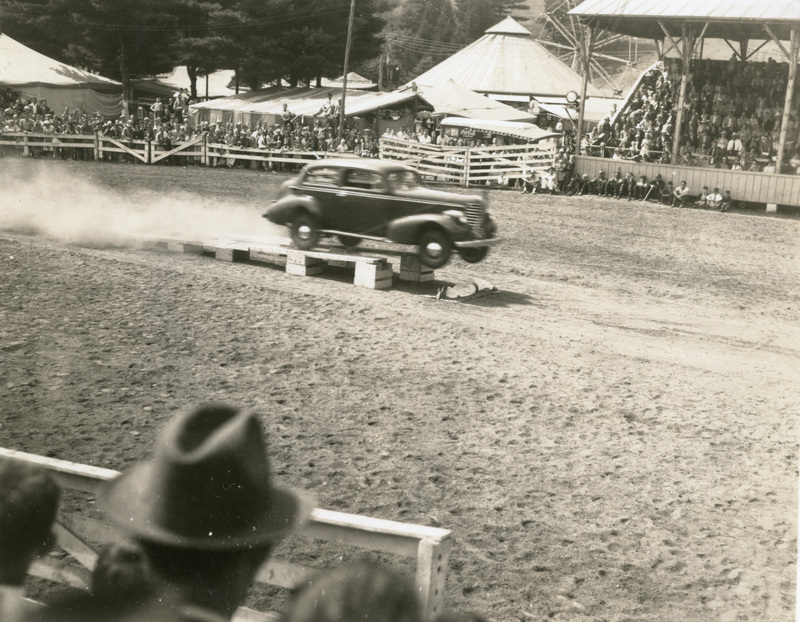By Ruth Jenne, 1948
The first Hartland Grange Fair was held on October 17, 1925. The one-day fair was held in the Village and Mechanics Hall (across from the brick church). There was a chicken pie supper and dance at Damon Hall. The fair has grown to a three-day fair with land of its own and many buildings erected as the fair grew. The Steele meadow was purchased in 1931 and the bandstand and judges stand built the next year. Buildings for exhibits and livestock were built. In 1934 the grandstand was built, the merry-go-round from the Woodstock fairgrounds was acquired, and land across the road was purchased for parking cars. Several of the buildings were built from buildings from the State Fair at White River Junction and Floral Hall at the Woodstock grounds. The grandstand came from St. Johnsbury and Floral Hall was part of the old Barnard Hotel.
The program consisted of sports, a parade, a children’s parade, horse stunts, a chicken pie supper and dance. After the cement floor was built, dances were held on the grounds in a large tent. An automobile was given away the last night to the holder of the lucky dance ticket. There were fireworks on two nights. In the early days of the fair, the vaudeville shows were presented by local talent. As the fair grew, these attractions were engaged from outside sources.
From the start of the fair until 1942, the fair opened with a parade. At first it was a street parade in the Village, but it grew to be nearly a mile long with beautifully decorated floats and vehicles, pedestrians and animals. [The route was from the Methodist Church, now the Sign Shop to the fairgrounds, now Hartland Elementary School. L. Motschman]
The fair was not held in 1942 because of the war. In 1943 there was a one-day fair with horse pulling and 4-H events. The following year the fair returned to the three-day program.
I asked people who viewed the exhibit for their comments and memories of the Fair:
Elizabeth Spear Graham attended her Aunt Elizabeth’s Farm-Home camp in the early 1950s and remembers the Fair as the most anticipated event of the summer. On fair day, the campers wore their best suits and dresses, complete with hats. A picnic lunch was packed as they were strictly forbidden to eat or drink anything from the Fair except bottled drinks. This was because of the extremely widespread fear of polio at that time. Since most of the campers were from the city or suburbs, they were quite interested in the animals at the Fair.
Sandra Springer Palmer grew up on top of the hill that overlooked the fairgrounds. She started working at the fair as a young teenager selling tickets. In the early sixties after auctioneer J.W. Barber bought the Fair, Sandy worked at a variety of events that Barber held there. For a few years there was a large Sportsman’s Show held in October.
As a young boy, the Hartland Fair was a highlight of my summer, occurring just a week or so before “back to school.” As a teenager, it wasn’t as exciting, but still not to be missed. My father and his Fish and Game Club buddies ran a dice game so I was at the Fair with him most nights. My favorite attraction at the Fair was the Joie Chitwood “Hell Drivers” show. The next day, we kids would be building ramps for our bicycles.

HHS has ledgers used by the various judges, ribbons, tickets, posters, programs and premium booklets. The latest booklet is 1964 with Hank Williams, Jr. and his white Cadillac on the cover. I don’t remember the show but distinctly remember Williams hanging out with people near the Floral Hall office after closing time. I didn’t think to get an autograph as I was more interested in getting an up-close look at the Cadillac.
Speaking of my father and cars, he won the car raffle in 1947, a black Plymouth. Les Motschman